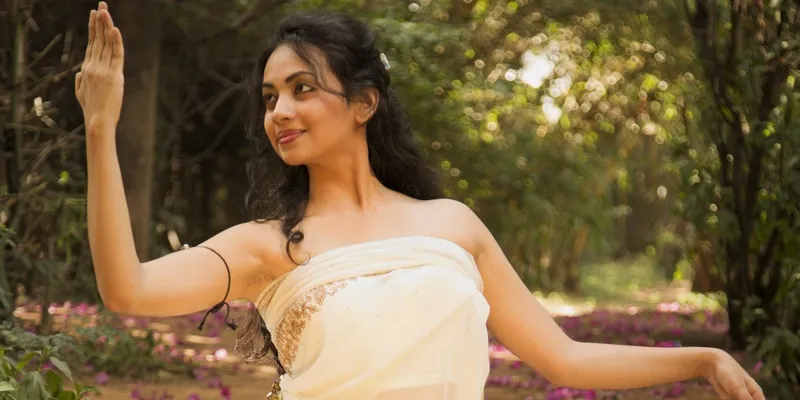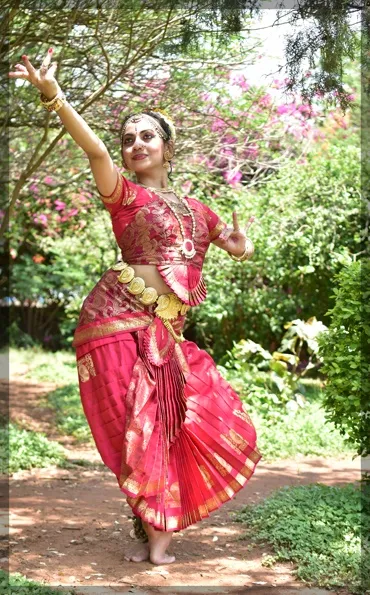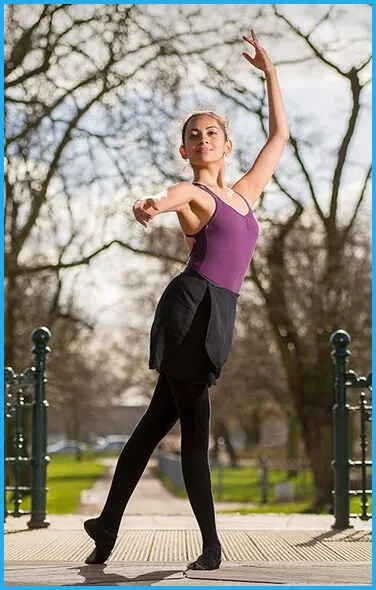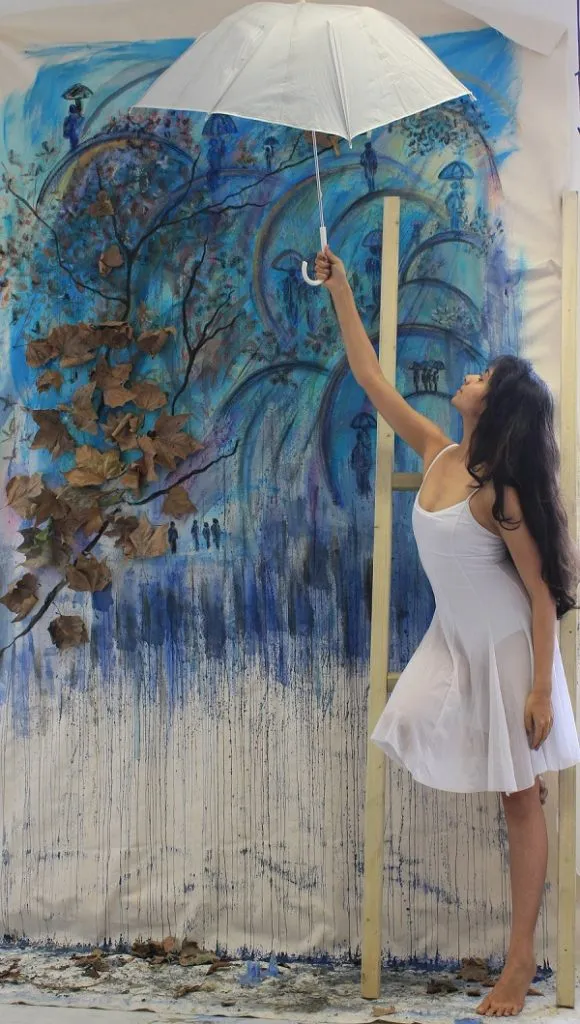Bharatnatyam and ballet dancer, published poet and artist, Radhika Prabhu strikes a beautiful balance among her three passions
Can an artist who plays around with colours and patterns bring that beauty of her art into the poetry she writes? Can a poet take the meaning and depth that dwells in her writing and imbue it in her dance movements?
What is more impressive about dancer, artist and poet Radhika Prabhu than her multiple talents is the seamless way she gives justice to all the three art forms. Trained in western and eastern classical dance forms, ballet and Bharatanatyam, respectively, Radhika is popular for her solo performances that combine the styles of both dance forms.

Born to Srinivasa Prabhu, veteran theatre and television personality, and Ranjini Prabhu, a well-known contemporary Kannada poet, it is no surprise that Radhika inherited the artistic talents of both her parents.
She decodes her dance style: “For me it is just a matter of perspective. The differences in the techniques and the use of the body and movements have been born because of the difference in perspective. The classical is a particular way of moving the body, and the contemporary is just a different way of moving the body. Personally, though I have trained in contemporary I am continuing to perform as a classical soloist.”
Polishing the rough diamond

Poetry, however, came to this dancer and artist organically. “Poetry started for me like the other art forms, very instinctively, very naturally. But it is the one form which I have not been ‘trained’ in. I have never attended any classes or workshops. Though it makes me nervous when sharing my work, I somehow like it this way – It helps me be raw and natural.” One of her first poems was selected and published in National Anthology of Young Poets by the Poetry Society of India in 2001 when she was in 10th grade. Radhika has since published two chapbooks of poetry and experimental prose.
Dance is a way of life

Radhika has a strong affiliation toward classical ballet. While many hastas (hand gestures) are used in Bharatanatyam, ballet does not have these and instead the dancer uses their whole body to convey emotions. Radhika says, “This element of Angika abhinaya is something that I have begun to use a lot in my solo Bharatanatyam choreographies. Also, while we use poetry and literature, classical ballet is danced to pure, instrumental music. This is also one of the approaches that I love incorporating in my solo performances.”
Radhika feels that dance requires an awareness of all the senses, of your mind and your heart, and your connection to the music, and your vibe with your audience. A Grade-A artist of Doordarshan, she has won awards including 'Natya Sri', 'Nrithya Jyothi', and the National award of 'Nrithya Bhushana'.
Art flows from thoughts onto canvas
For Radhika art is the best way to communicate thoughts and feelings, and she feel they also do one more thing very beautifully - they express alternative ways of thinking and feeling. They present various possibilities of looking at and experiencing the world, which others might not be completely aware of. For example, her series ‘Elite Intervals’ is an exploration of the LGBT experience in places where it is not understood or accepted.

Weaving magic with words through poetry

I love the unique quality of literature - it is created and enjoyed in solitude, yet it crowds your being with whole new spaces and times. I love the sound of different words, of how meanings can alter with different arrangement of the same words, of how you can evoke a striking image or an emotion with the smallest of sentences.
she explains.
An excerpt:
Footsteps.
Fog steps.
Fog. Steps
In, leaving behind its tangible, melting
Coat. Voices all muffled,
Scuffle
Amidst the crackling fireplaces.
Gently. And
outside,
The bloodless, dense limb wraps
The grey city of doll houses,
Squeezing it, caressing its
Green pools of hazels and
Birches; crumbling crusts of brown sticking out
Like mocking tongues at the absence of
Snow. And the steps are silent till someone,
inside,
Sips, in the middle of their hot
Supper, its frosty fingers sunk somewhere
In their white soup.
The synchronisation
But while she is such a versatile artiste, Radhika says that there are certain thoughts and emotions that she can express perfectly with one particular form and not necessarily with the others. So, she goes where the idea takes her. “I make sure that I do my basic body conditioning and basic sketching everyday so that I don’t feel alienated from any art at any given time. But the creative process is dependent on what project I am involved in and what particular idea or concept I am dealing with at that time,” she explains.
But painting is slightly more challenging than the others, because she tends to do large-scale canvasses or installations, and the availability of affordable studio spaces every time and everywhere she travels is not a guarantee. “It is slightly daunting at time, and it does feel like I am taking on too much but that very fact inspires me to work and create more,” she confesses.
Cityscapes
While Bengaluru is the city Radhika grew up in and therefore the place she has roots in, London has been a fantastic space for inspiration and growth. “I love the weather there, which many Londoners find funny! Especially after doing my Masters there and having experienced life and art there, it holds a special place for me personally and creatively. I feel lucky that I have the opportunities and the circumstances that allow me to be able to travel back and forth and experience life on both sides.”







